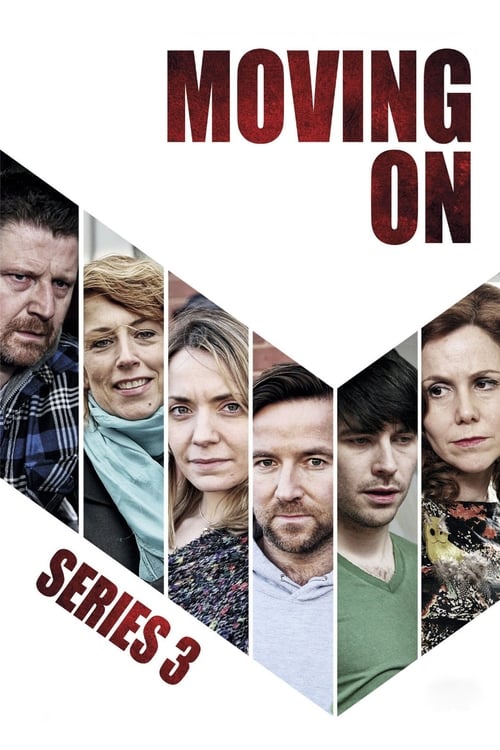
Ask Your Own Question
What is the plot?
In the first episode of Season 3 of "Moving On," titled "The Last Resort," we meet a couple, Karen and her husband, who are on the verge of a breakdown in their marriage. They arrive at a seaside resort, hoping to rekindle their relationship. The atmosphere is tense as Karen feels neglected and unappreciated. Her husband, on the other hand, is preoccupied with work and fails to notice her emotional state.
As they settle into their room, Karen attempts to engage her husband in conversation, but he brushes her off, absorbed in his phone. Frustrated, she decides to explore the resort on her own. While wandering, she encounters a group of lively guests who are enjoying their time, which starkly contrasts her own situation. This interaction sparks a glimmer of hope in her, and she begins to contemplate her own happiness.
Later that evening, Karen confronts her husband about their relationship. He dismisses her concerns, leading to a heated argument. Karen, feeling increasingly isolated, leaves the room and joins the other guests at a communal bonfire. Here, she shares her feelings with a sympathetic stranger, who encourages her to think about what she truly wants from life. This moment of connection empowers Karen to consider making significant changes.
In the second episode, titled "The Last Chance," we follow a man named Tom, who is struggling with the aftermath of a recent breakup. He is seen packing up his ex-girlfriend's belongings, which he has been avoiding for weeks. The emotional weight of the task is palpable as he reminisces about their time together, feeling a mix of sadness and anger.
Tom's best friend, Mark, tries to support him by encouraging him to move on and start dating again. However, Tom is resistant, feeling unworthy of love. Mark pushes him to attend a local singles event, insisting that it could be a good distraction. Reluctantly, Tom agrees, but his heart isn't in it.
At the singles event, Tom feels out of place and awkward. He struggles to connect with anyone, and his internal conflict is evident as he grapples with his feelings of inadequacy. Just when he is about to leave, he meets a woman named Sarah, who shares her own story of heartbreak. Their conversation becomes a turning point for Tom, as he begins to open up about his feelings. This connection helps him realize that he is not alone in his struggles.
The third episode, "The Last Goodbye," centers on a woman named Lisa, who is dealing with the impending death of her mother. The episode opens with Lisa receiving a call from the hospital, informing her that her mother's condition has worsened. The emotional turmoil is evident as Lisa rushes to the hospital, her mind racing with memories of her mother and the unresolved issues between them.
At the hospital, Lisa finds her mother in a frail state. The atmosphere is heavy with unspoken words and regrets. Lisa struggles with her emotions, torn between wanting to express her love and the anger she feels over their past conflicts. As she sits by her mother's bedside, she reflects on their complicated relationship, filled with both love and resentment.
In a poignant moment, Lisa finally musters the courage to speak to her mother about their issues. They share a heartfelt conversation, where Lisa expresses her feelings of hurt and longing for reconciliation. Her mother, in turn, reveals her own regrets and fears. This exchange brings a sense of closure to both women, allowing them to reconnect before it's too late.
The final episode of the season, "The Last Step," follows a man named David, who is preparing for a major life change. He has decided to leave his job and pursue his dream of becoming an artist. The episode begins with David packing up his office, filled with a mix of excitement and anxiety about the future. His colleagues express disbelief at his decision, questioning his choice to leave a stable job for an uncertain path.
As David reflects on his decision, he recalls moments of doubt and fear that have plagued him throughout his life. He grapples with the fear of failure but ultimately resolves to follow his passion. His internal struggle is palpable as he weighs the opinions of others against his own desires.
In the climax of the episode, David attends a local art exhibition, where he showcases his work for the first time. The event is filled with a mix of supportive friends and skeptical critics. As he stands by his artwork, he feels vulnerable and exposed. However, the positive feedback he receives from attendees boosts his confidence, reaffirming his decision to pursue art.
The episode concludes with David reflecting on his journey, feeling a sense of liberation and hope for the future. He embraces the uncertainty of his new path, ready to face whatever comes next with renewed determination.
What is the ending?
In the final episode of "Moving On," Season 3, the story revolves around a woman named Mary who is grappling with the aftermath of her husband's death. As she navigates her grief, she finds herself at a crossroads, facing the challenge of moving forward with her life. The episode concludes with Mary making a significant decision about her future, symbolizing her journey towards healing and acceptance.
As the episode begins, we see Mary in her modest home, surrounded by reminders of her late husband. The atmosphere is heavy with sorrow, and Mary's internal struggle is palpable. She sits at the kitchen table, staring at a photo of her husband, lost in thought. The silence is broken by the sound of her phone ringing, pulling her back to reality. It's her friend, who encourages her to join a support group for widows. Mary hesitates, feeling the weight of her grief, but ultimately agrees to attend.
The scene shifts to the support group meeting, where Mary is surrounded by other women who share their stories of loss. The room is filled with a mix of emotions--sadness, anger, and a flicker of hope. As Mary listens to their experiences, she begins to feel a sense of camaraderie. She shares her own story, her voice trembling as she recounts her husband's illness and passing. The other women offer her comfort, and for the first time, Mary feels a glimmer of understanding and connection.
After the meeting, Mary forms a bond with one of the women, Linda, who invites her to join a weekend retreat aimed at healing. Mary is hesitant but feels a pull towards the idea of stepping out of her comfort zone. The scene transitions to Mary at home, contemplating the invitation. She looks around her house, filled with memories, and realizes that she cannot stay trapped in her grief forever.
The next scene shows Mary at the retreat, surrounded by nature. The atmosphere is serene, and the beauty of the surroundings contrasts sharply with her internal turmoil. During a group exercise, participants are encouraged to write letters to their deceased loved ones. Mary struggles to find the words, but eventually, she pours her heart out onto the page, expressing her love and her pain. This cathartic moment marks a turning point for her.
As the retreat progresses, Mary begins to engage more with the other participants, sharing laughter and stories. She starts to rediscover parts of herself that she thought were lost. One evening, while sitting around a campfire, Mary opens up about her fears of moving on and the guilt she feels for wanting to live again. The group supports her, reinforcing the idea that it's okay to find joy after loss.
The climax of the episode occurs when Mary returns home. She stands in her living room, looking at the photo of her husband once more. This time, instead of sorrow, there is a sense of peace in her expression. She takes the photo and places it in a box, symbolizing her readiness to move forward. The scene is poignant, capturing the essence of her journey from grief to acceptance.
In the final moments, Mary is seen packing a small bag, preparing to take a trip. She steps outside, taking a deep breath of fresh air, a smile breaking through her previously somber demeanor. The episode ends with her walking down the street, a sense of purpose in her stride, indicating that she is ready to embrace life again.
Throughout the episode, Mary's journey reflects the universal themes of grief, healing, and the importance of community support. Each character she interacts with plays a role in her transformation, highlighting the significance of connection in overcoming personal struggles. By the end, Mary's fate is one of hope and renewal, as she takes the first steps towards a new chapter in her life.
Is there a post-credit scene?
In the third season of "Moving On," there are no post-credit scenes. Each episode concludes without additional content after the credits roll. The focus remains on the main narratives and character arcs presented throughout the episodes, allowing viewers to reflect on the stories and themes explored without any further scenes or teasers. The series emphasizes the emotional journeys of its characters, and the absence of post-credit scenes aligns with its storytelling style, which centers on closure and resolution within each episode.
What is the main conflict in the episode 'Season 3' of Moving On?
In the episode 'Season 3', the main conflict revolves around the character of Helen, who is struggling with the emotional fallout of her recent divorce. She grapples with feelings of loneliness and the challenge of starting anew, which is compounded by her interactions with her ex-husband and their children.
How does Helen's relationship with her ex-husband evolve throughout the episode?
Throughout the episode, Helen's relationship with her ex-husband is fraught with tension and unresolved feelings. Initially, they engage in heated arguments, reflecting their past grievances. However, as the episode progresses, there are moments of vulnerability where they both express their regrets and desires for a more amicable relationship, showcasing a gradual shift towards understanding.
What role do Helen's children play in her journey in this episode?
Helen's children play a crucial role in her emotional journey. They are depicted as both supportive and confused by the changes in their family dynamic. Their reactions to their parents' divorce highlight Helen's internal struggle, as she seeks to balance her desire for independence with her responsibilities as a mother, ultimately leading to poignant moments of connection and reflection.
What significant event occurs that forces Helen to confront her past?
A significant event that forces Helen to confront her past is a family gathering that she reluctantly attends. During this gathering, old wounds are reopened as she faces her ex-husband and their shared memories. This confrontation serves as a catalyst for her to reevaluate her choices and the impact of her past on her present life.
How does the episode depict the theme of moving on through Helen's character development?
The episode depicts the theme of moving on through Helen's character development by illustrating her journey from despair to empowerment. Initially, she is portrayed as lost and overwhelmed by her circumstances. However, as she navigates her relationships and reflects on her life choices, she begins to reclaim her identity, culminating in a powerful moment of self-acceptance and determination to embrace her future.
Is this family friendly?
"Moving On," Season 3, produced in 2011, features a variety of storylines that explore complex emotional themes and personal relationships. While the show is generally suitable for a broad audience, there are some elements that may be considered objectionable or upsetting for children or sensitive viewers.
-
Emotional Conflict: Many episodes delve into themes of loss, betrayal, and personal struggle, which may be intense for younger viewers. Characters often face difficult decisions that lead to emotional turmoil.
-
Family Issues: The show frequently addresses family dynamics, including divorce, estrangement, and the impact of personal choices on family relationships. These themes can be heavy and may resonate deeply with some viewers.
-
Depictions of Grief: Some storylines involve characters dealing with the death of loved ones or significant life changes, which can be distressing for sensitive audiences.
-
Moral Dilemmas: Characters often confront ethical challenges that lead to tension and conflict, which may provoke anxiety or discomfort in younger viewers.
-
Realistic Dialogue: The conversations can include frank discussions about relationships and personal failures, which might not be suitable for all children.
Overall, while "Moving On" offers valuable life lessons and emotional depth, its exploration of serious themes may require parental guidance for younger audiences.











